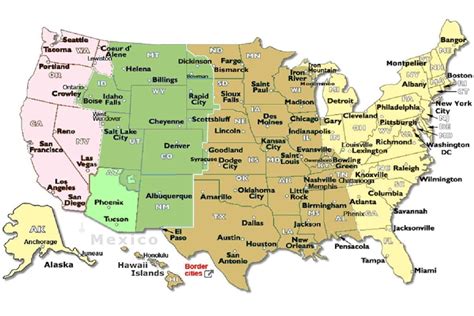The question of whether Spanish people are considered white is a complex and multifaceted one, influenced by historical, cultural, and social factors. The concept of whiteness is not only a matter of skin color but also encompasses cultural identity, ethnicity, and socio-economic status. In the context of the United States, the categorization of Spanish people, or more broadly, people of Spanish descent, including those from Spain and Latin America, varies significantly depending on the individual's background, the region they reside in, and the social context.
Historical and Cultural Context

Historically, the Spanish Empire encompassed a vast territory that included not only the Iberian Peninsula but also extensive regions in the Americas, Africa, and Asia. This led to a diverse range of cultures, ethnicities, and racial identities within the Spanish-speaking world. In Spain itself, the population is predominantly of European ancestry, but there are also significant influences from Moorish (North African) and Jewish cultures due to the country’s complex history of conquest and coexistence.
In the Americas, the legacy of Spanish colonization and the subsequent mixing of European, indigenous, and African populations have resulted in a rich tapestry of ethnic and racial identities. Terms like "Hispanic" or "Latino" are often used to describe people from these regions, but these categories are broad and encompass a wide range of racial, ethnic, and national identities. For example, a person from Spain might identify as Spanish or European, while someone from Latin America might identify as Latino, Hispanic, or by their specific national identity (e.g., Mexican, Argentine, Colombian), and may or may not be considered white depending on their skin color, cultural practices, and socio-economic status.
Racial and Ethnic Classifications
In the United States, the Census Bureau uses the terms “Hispanic” or “Latino” to refer to people who identify with one or more nationalities or ethnic groups originating from Spanish-speaking countries. However, these terms do not specify race, and individuals may identify as white, black, American Indian, Asian, or other racial categories in addition to their ethnic identification. The decision of whether to identify as white, or another racial category, can depend on factors such as skin color, cultural practices, and personal or family identity.
It's also worth noting that the concept of whiteness and how it is perceived can vary significantly across different regions and cultures. In some Latin American countries, for instance, the term "white" might refer specifically to individuals of purely European descent, while in others, it might be used more broadly to include anyone who is not indigenous or of African descent, regardless of their mixed ancestry.
| Category | Description |
|---|---|
| Hispanic/Latino | Broad ethnic categories that encompass diverse racial identities |
| White | Racial category that may include people of European descent, but can be perceived differently across cultures |
| Spanish | National or ethnic identity referring specifically to people from Spain or of Spanish descent |

Socio-Cultural Implications

The question of whether Spanish people are considered white also has socio-cultural implications, particularly in terms of identity, social status, and access to resources. In many societies, including the United States, there are significant disparities in how different racial and ethnic groups are perceived and treated. The categorization of an individual as white, Hispanic, Latino, or another category can influence their experiences with discrimination, access to education and employment opportunities, and overall socio-economic status.
Furthermore, the fluidity of racial and ethnic identities among Spanish-speaking populations reflects the dynamic nature of these categories. Individuals may identify differently depending on their personal experiences, family background, and the social context in which they find themselves. This highlights the importance of understanding and respecting the complexity of identity and the varied ways in which people from Spanish-speaking backgrounds may choose to identify themselves.
Key Points
- The categorization of Spanish people as white depends on historical, cultural, and social factors.
- Terms like "Hispanic" or "Latino" are broad and encompass a range of racial and ethnic identities.
- The perception of whiteness can vary across different regions and cultures.
- Individuals from Spanish-speaking backgrounds may identify differently based on personal, family, and socio-cultural factors.
- Understanding and respecting the complexity of identity is crucial in acknowledging the diversity within Spanish-speaking populations.
In conclusion, the question of whether Spanish people are considered white is not a simple one to answer. It involves a nuanced understanding of the complex interplay between historical, cultural, and social factors that influence how individuals from Spanish-speaking backgrounds identify themselves and are perceived by others. By recognizing and respecting this complexity, we can work towards a more inclusive understanding of identity and diversity.
What does it mean to be Hispanic or Latino?
+Being Hispanic or Latino refers to an ethnic identity that encompasses a broad range of nationalities and cultures originating from Spanish-speaking countries. It does not specify race, and individuals may identify as white, black, indigenous, or other racial categories in addition to their ethnic identity.
How do people from Spain identify themselves racially?
+People from Spain may identify as white or European, reflecting their predominantly European ancestry. However, there is also a recognition of the diverse cultural influences in Spain, including Moorish and Jewish heritage.
Why is the categorization of Spanish people as white important?
+The categorization of Spanish people as white or otherwise has implications for their social status, access to resources, and experiences with discrimination. Understanding and respecting the complexity of identity can help promote inclusivity and address disparities.



